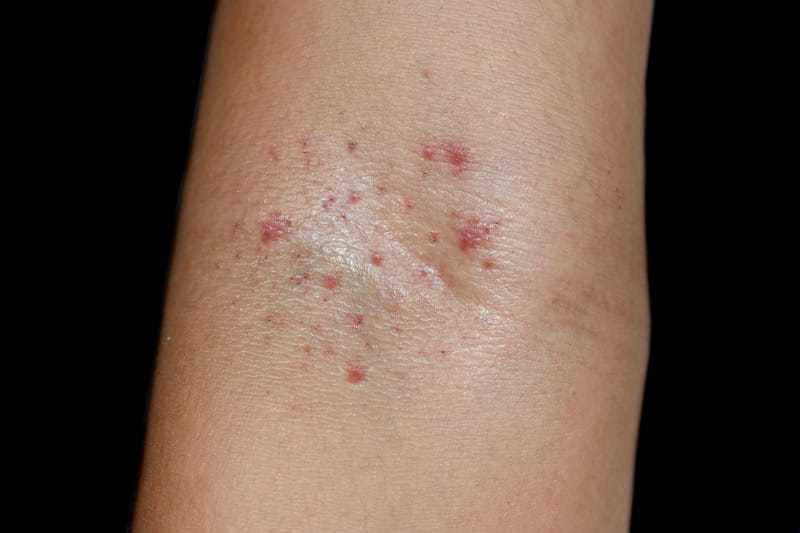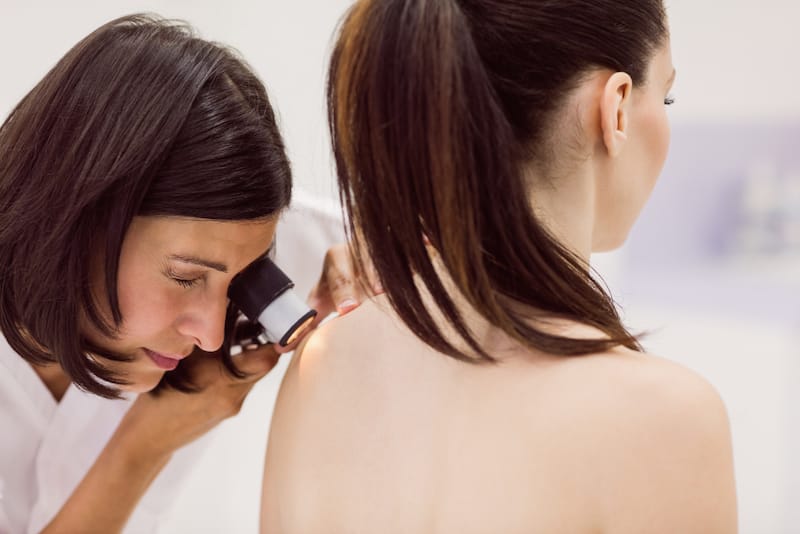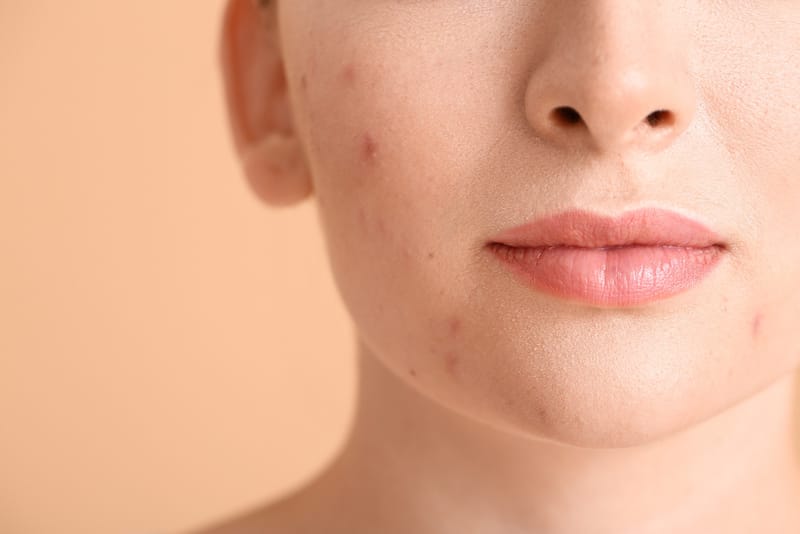Having small, red, pinprick dots on your skin is called Petechiae. Petechiae are tiny spots of blood caused due to bleeding underneath the surface of your skin. They do not cause bumps in your skin, and the colors can often vary from red to brown or even purple. And while they are often mistaken for rashes, Petechiae are not a rash.
Finding red spots on your skin can be quite frightening. They don’t do much for your appearance and can make you feel self-conscious, especially when they come in clusters and start to look like a rash.
They might also be making your skin feel dry and slightly itchy.
Could these dots be related to freckles, or do they point to a skin condition? Is it a rash? Should you seek medical attention?
What are the red dots, and are they a symptom of something more?
What is Petechiae?
As you might know, blood is circulated through your body via your veins, arteries, and capillaries.
Capillaries are often the connections between your veins and arteries. Sometimes, the blood might start leaking out from your capillaries underneath your skin.
These tiny spots of blood appear like small dots the size of pinpricks on your skin.
As these spots are quite small, there are no noticeable bumps or pits on your skin near the spots.
These spots can appear anywhere in your body, although they are much more likely to appear on your arms, legs, stomach, or buttocks.
A quick way to separate Petechiae from a rash would be to press gently on the spots. If it’s Petechiae, the color should remain the same, while the color of a rash would become paler. A rash is also itchy, and Petechiae is not.
Why did I get these red spots on my skin?
It’s very important to note that Petechiae is not a disease by itself.

It is often considered to be a symptom. The below conditions tend to be the most common causes that also cause Petechiae.
- Injury to the skin – If you’ve recently been in an accident or had some rough physical contact, this could have been the cause for the red pinprick spots in your skin. In this context, the spots are harmless and may disappear in a few days.
- Endocarditis – This is quite a serious condition that is caused by an infection in the lining of your heart. However, endocarditis is accompanied by other symptoms such as fever, sudden chills, weakness, shortness of breath, and fatigue. If you notice any accompanying symptoms, please see a medical professional immediately.
- Infections – Specific infections such as scarlet or rocky mountain spotted fever can also cause red pinpricks on your skin. It can also be caused by viral infections. Regardless, if you have an infection, the spots will also be accompanied by fever, nausea, fatigue, and possibly a sore throat.
- New medication – Certain medications can cause your blood to thin, leading to small red spots on the skin. Antibiotics and antidepressants can also cause the thinning of your blood. If you’ve started taking any new medicine before noticing that red spots have been appearing on your skin, it would be best to discuss this with your doctor.
- Mononucleosis – More commonly known as Mono, this is a viral infection. Usually occurring mostly in the younger population, it is also accompanied by the symptoms of an infection.
- Straining your muscles – Pushing yourself hard can strain your muscles (especially in the gym). Straining can cause blood vessels to burst, leading to blood clots underneath your skin. While these should dissipate within a few days, it could be your body asking you to not push yourself to such an extent.
- Thrombocytopenia – This condition makes it very hard for your blood to clot due to a low platelet count. Due to this, it is easier for little red spots of blood to make their way to the surface of your skin. Bleeding from your nose, gums, or having blood in your urine and stool can point to Thrombocytopenia.
- Vasculitis – This means inflammation, especially in your blood vessels causing small blood clots to be visible from the skin’s surface. Also accompanied by fever, headaches, and even weight loss.
- Viral hemorrhagic fevers – Diseases such as dengue and Ebola reduce blood’s ability to clot. These diseases are often identifiable by high fever and body aches.
- A lack of Vitamin C – a vitamin C deficiency can also cause red spots to appear on your skin along with scurvy and poor gum health.
- Leukemia – blood and bone marrow cancer, arguably the worst possible option.
How can I treat my Petechiae?
Due to the various causes of Petechiae, a single treatment to get rid of the red spots cannot be prescribed.

Based on the symptoms above, any signs of fever or aches along with Petechiae should be treated by a doctor. However, as most of the above conditions tend to be bacterial, prescribed antibiotics may help reduce the symptoms.
Drinking lots of fluids, taking a multivitamin, and resting can also do wonders, especially in the long run.
If you are trying to prevent petechiae, being hygienic, eating a healthy diet, and washing your hands can be beneficial.
You should always call a doctor if the red spots are accompanied by fever, confusion, dizziness, trouble breathing, swellings, stiff muscles, and rapid spread of spots.
The other possibilities for red pinprick spots
While petechiae are responsible for most cases concerning red spots, it is not the sole contributor.
Contact dermatitis can also be responsible for little red spots on your skin.
This occurs when your skin comes into contact with any material that it finds irritating, often an allergy. However, in this case, the red spots would be more of a rash.
Some other symptoms include dry skin, itching, burning sensations, and blisters on your skin. It is also important to note that, unlike petechiae, these spots could be distinctly felt on the skin.
While treatment can vary based on the severity of the allergen, hydrocortisone creams and antihistamines can help manage the symptoms.
Another probable cause could be eczema, also known as atopic dermatitis. This chronic inflammatory skin condition causes itchy, dry skin and blisters.
Similar to contact dermatitis, it can be distinguished from petechiae as petechiae do not present red bumps but spots.
The treatment for atopic dermatitis may be prescribed by a dermatologist but would usually involve steroids or antihistamines.
To summarize
There are many possible reasons for sudden red pinprick spots underneath your skin.
However, by reading the symptoms and conditions mentioned above, you should now have a good idea of whether your petechiae is harmless or is pointing to a bigger condition.
If you have other accompanying symptoms like fever, headaches, or rashes, please get checked out by a medical professional immediately.
If the spots are spreading rapidly or do not disappear in a few days, please do get yourself checked out.
After all, it is much better to be safe than sorry, especially considering the potentially dangerous conditions of which petechia can be a symptom.


